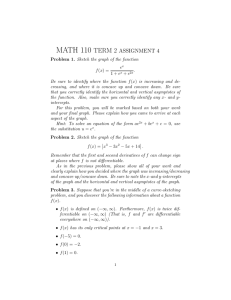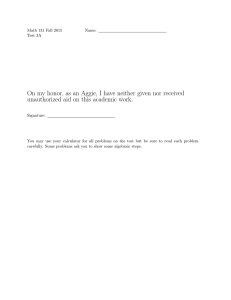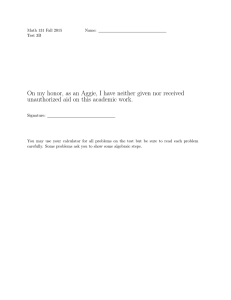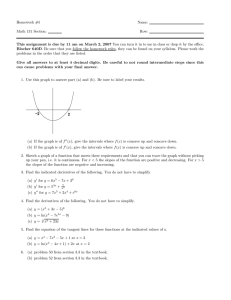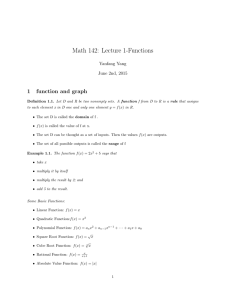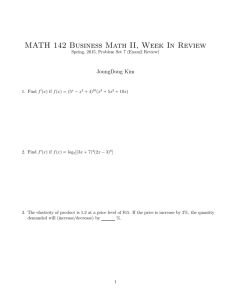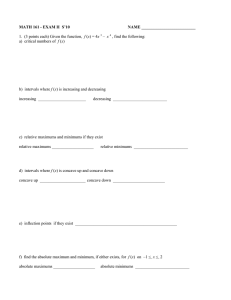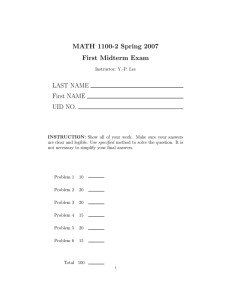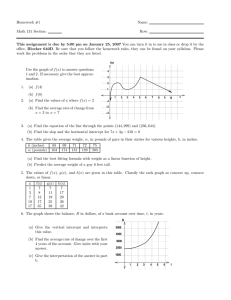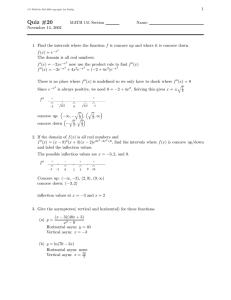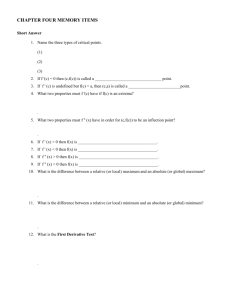1 In Class Questions MATH 151-Fall 02 November 14
advertisement
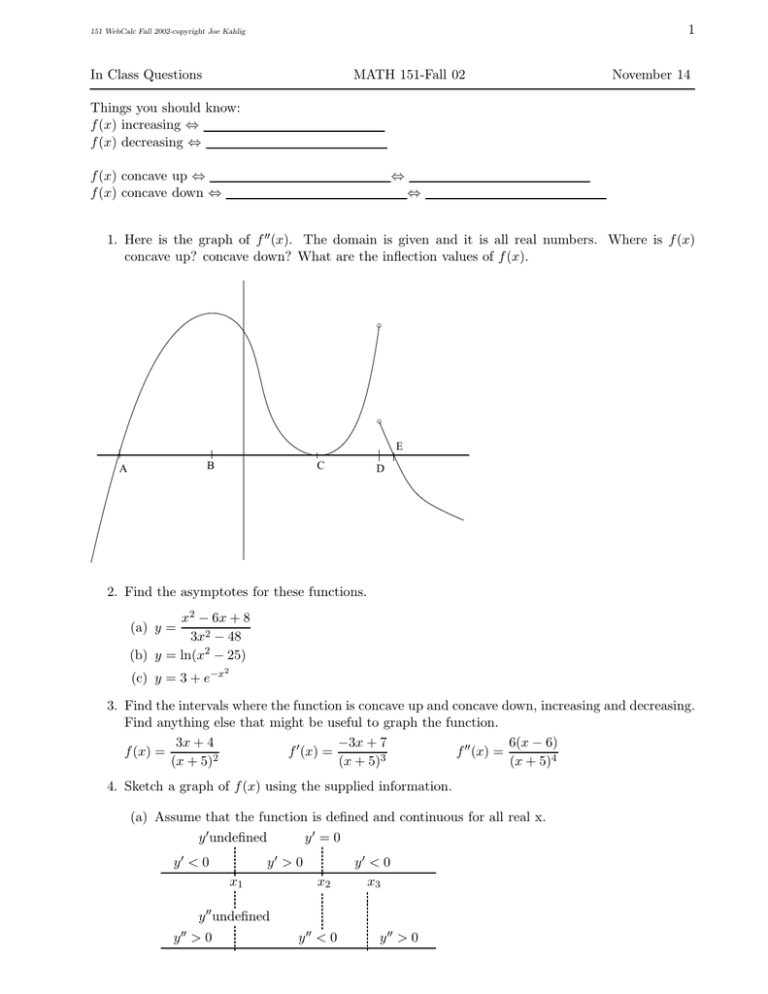
1 151 WebCalc Fall 2002-copyright Joe Kahlig In Class Questions MATH 151-Fall 02 November 14 Things you should know: f (x) increasing ⇔ f (x) decreasing ⇔ f (x) concave up ⇔ f (x) concave down ⇔ ⇔ ⇔ 1. Here is the graph of f 00 (x). The domain is given and it is all real numbers. Where is f (x) concave up? concave down? What are the inflection values of f (x). E B A C D 2. Find the asymptotes for these functions. x2 − 6x + 8 3x2 − 48 (b) y = ln(x2 − 25) (a) y = (c) y = 3 + e−x 2 3. Find the intervals where the function is concave up and concave down, increasing and decreasing. Find anything else that might be useful to graph the function. 3x + 4 −3x + 7 6(x − 6) f (x) = f 0 (x) = f 00 (x) = 2 3 (x + 5) (x + 5) (x + 5)4 4. Sketch a graph of f (x) using the supplied information. (a) Assume that the function is defined and continuous for all real x. y 0 undefined y0 = 0 y0 < 0 y0 > 0 x1 x2 y0 < 0 x3 y 00 undefined y 00 > 0 y 00 < 0 y 00 > 0 2 151 WebCalc Fall 2002-copyright Joe Kahlig (b) x-intercept of 0, vertical asymptote: x = −5 and x = 5 f 0 (−2) = f 0 (2) = f 0 (7) = 0, lim f (x) = 0, lim f (x) = 3 x→∞ x→−∞ f 0 (x) < 0 on (−∞, −5), (−5, −2) and (2, 5) f 0 (x) > 0 on (−2, 2) and (5, ∞) f 00 (x) > 0 on (−5, 0) and (7, 9) f 00 (x) < 0 on (−∞, −5), (0, 5), (5, 7) and (9, ∞)

